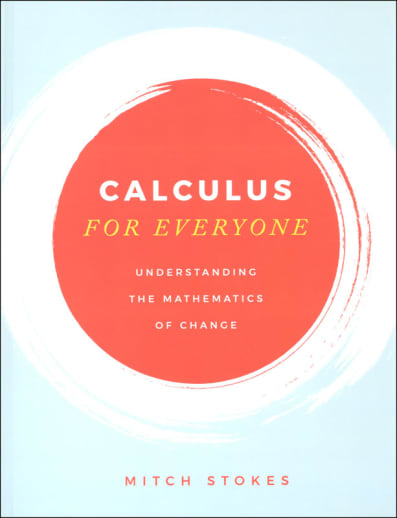The presentation of the material is as well done as the content itself. The layout makes it easy to understand and there are over 600 hand-drawn illustrations and equations. This is a book to read and read again if a concept is confusing. Students are even encouraged to write in the margins. Study questions and exercises come after each chapter. Answers to study questions and solutions to the exercises are in a separate solutions manual.
Calculus for Everyone: Understanding the Mathematics of Change
Description
Based on more than a decade of classroom experience, this book provides mastery of calculus's core by focusing on the foundational concepts of limits, derivatives, and integrals, explaining how all three are united in the fundamental theorem of calculus. Moreover, Calculus for Everyone explains how the story of calculus is central to Western culture, from Plato in ancient Greece, to today's modern physics. Indeed, this book explains why calculus is needed at all—and why it is needed so badly. By mastering the core of calculus—as well as seeing its meaning and significance—students will not only better understand math and science in general, but contemporary culture and their place in it.
If you are looking for an easily understood course that teaches the basics of calculus, check out this program. An engineer and academic philosopher, the author interweaves the story of calculus with philosophy and science from a Christian perspective. He says the fundamentals of calculus can be taught to anyone with a basic understanding of algebra; this course only requires Algebra I as a prerequisite.
Calculus for Everyone helps students master the foundational concepts of limits, derivatives, and integrals, explaining how all three are united in the fundamental theorem of calculus. The focus is on concepts of calculus proper, not on complicated functions such as rational, trigonometric, exponential, or logarithmic functions. Once the basic concepts of calculus have been mastered, students can go on to more complicated calculus concepts, if desired. However, completing this course will count as one high school credit.
The presentation of the material is as well done as the content itself. The layout makes it easy to understand and there are over 600 hand-drawn illustrations and equations. This is a book to read and read again if a concept is confusing. Students are even encouraged to write in the margins. Study questions and exercises come after each chapter. Study questions answers are in the chapter text itself. Exercise solutions are in the Solutions Manual, separate from the textbook.
| Product Format: | Hardcover |
|---|---|
| Grades: | 10-AD |
| Brand: | Roman Roads Media |
| ISBN: | 9781944482541 |
| Length in Inches: | 9.875 |
| Width in Inches: | 7.75 |
| Height in Inches: | 1.3125 |
| Weight in Pounds: | 2.63 |

